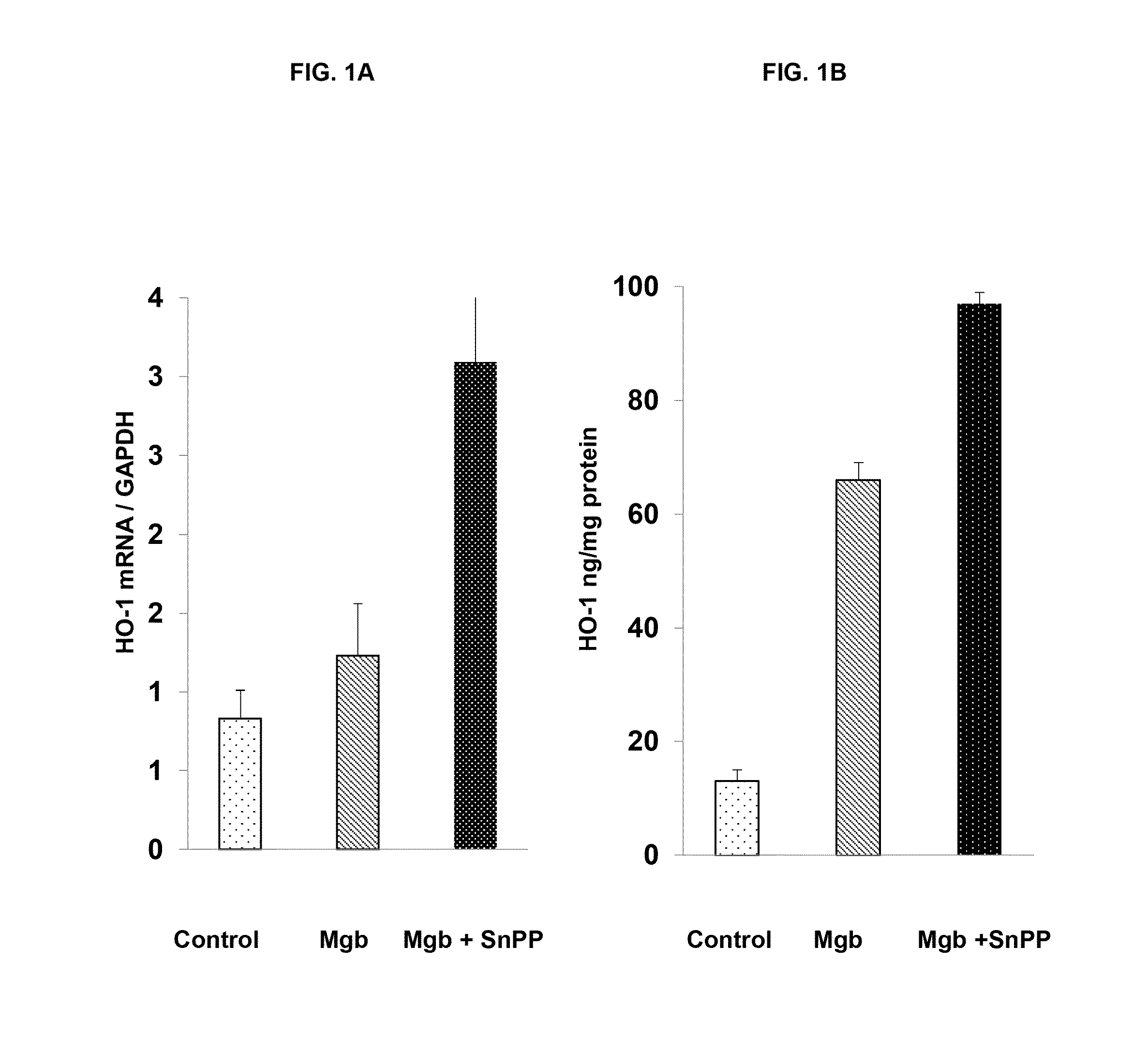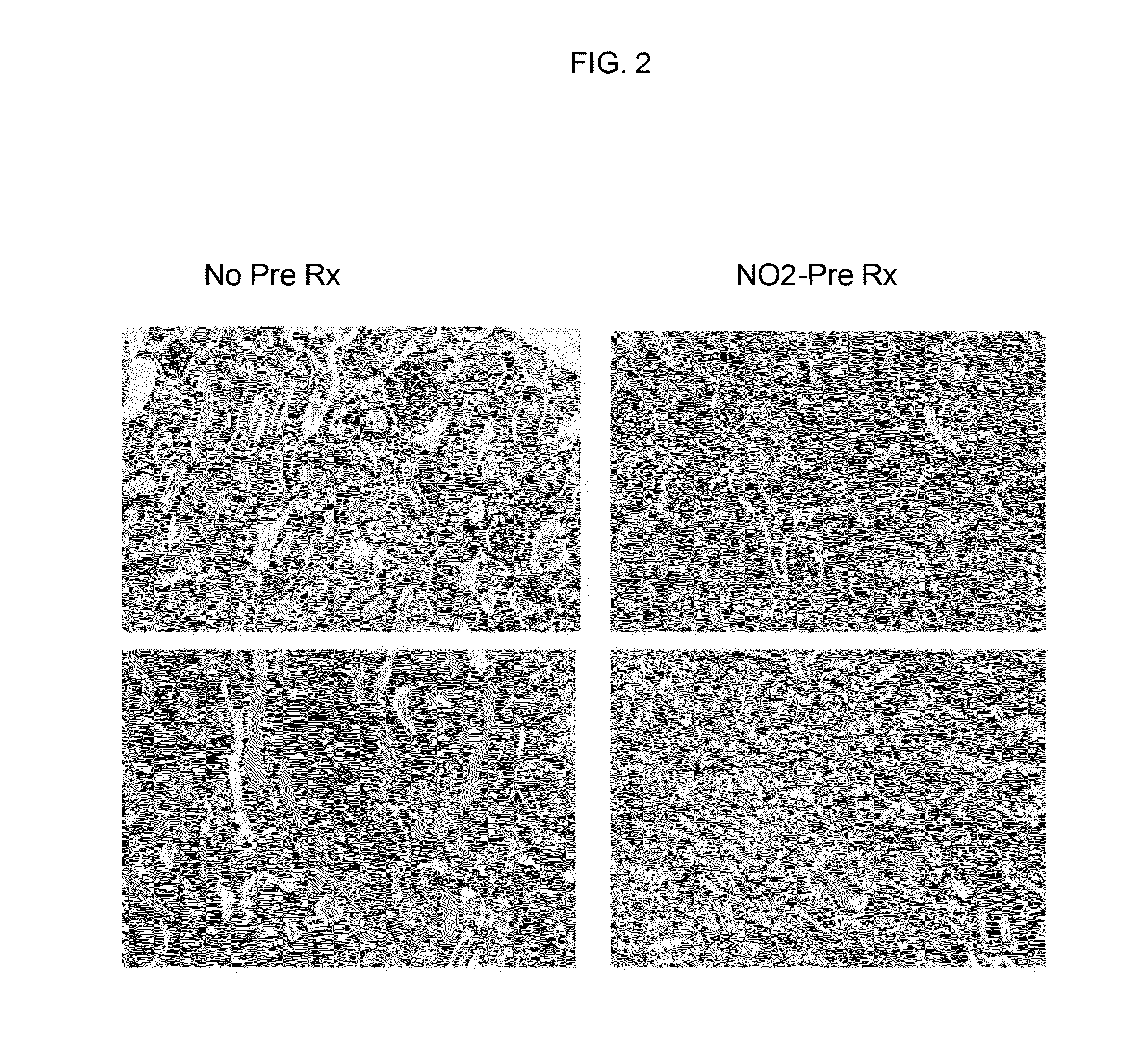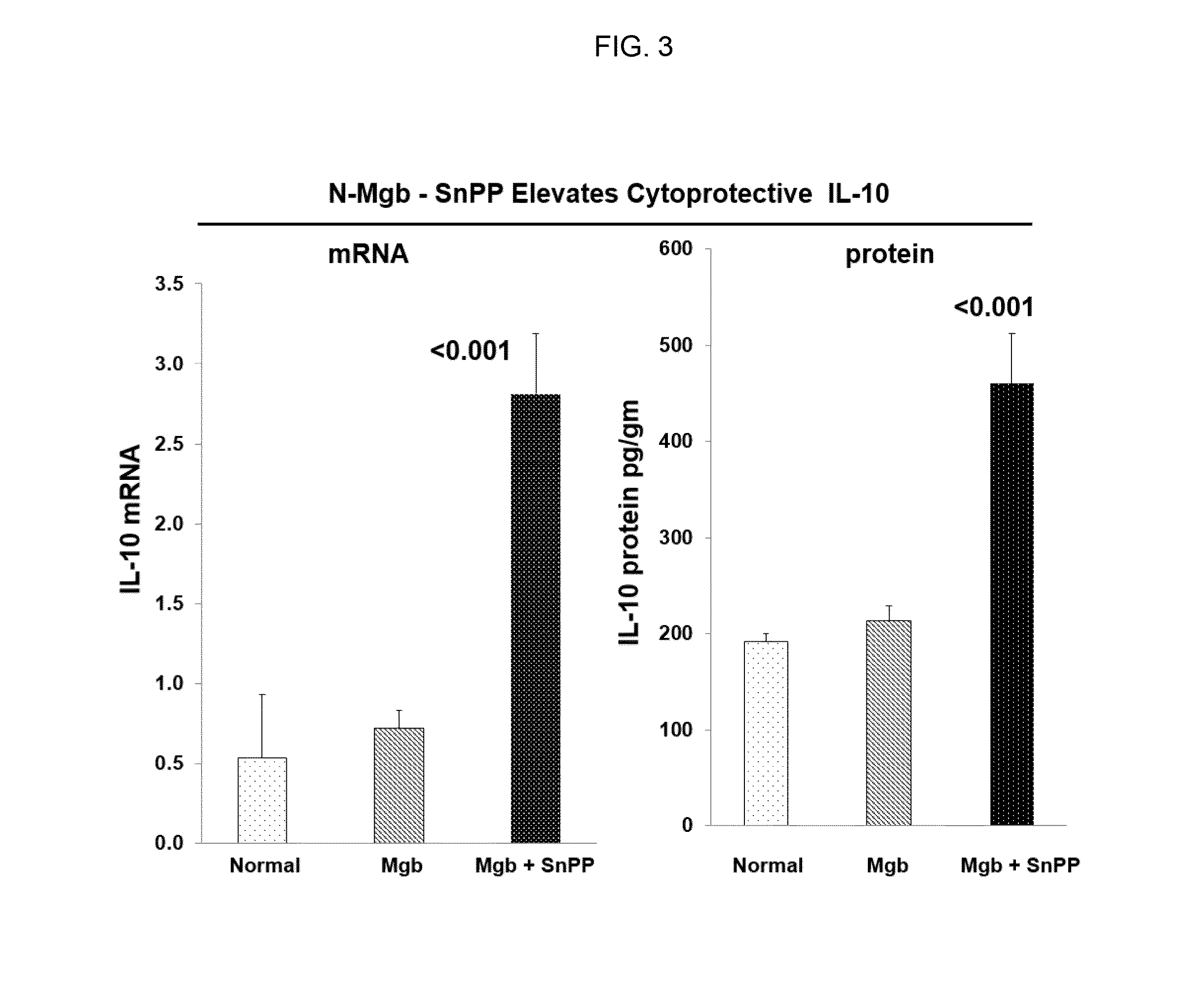Compositions, kits, and methods to induce acquired cytoresistance using stress protein inducers
a technology of stress protein and inducer, which is applied in the field of kits and methods to induce acquired cytoresistance using stress protein inducers, can solve the problems that the approach has not been deployed into clinical use, and achieve the effect of reducing toxicity and inducing acquired cytoresistan
- Summary
- Abstract
- Description
- Claims
- Application Information
AI Technical Summary
Benefits of technology
Problems solved by technology
Method used
Image
Examples
example 1
Renal Protection
[0421]The data described in FIGS. 1-4 and Tables 1-7 was collected using the following protocols:
[0422]The Glycerol Model of AKI. This is a widely used model of rhabdomyolysis-induced AKI that has been employed worldwide for 50 years. The model was used to test whether prophylactic interventions confer protection against AKI. Basically, the protocol is as follows: Male CD-1 mice (35-45 grams), obtained from Charles River Laboratories, Wilmington, Mass. were studied. Mice were maintained under standard vivarium conditions and generally housed for 1-3 weeks prior to study. The mice were placed in a cylindrical restraining cage, and then were given a tail vein injection of the test substances (see below) or test substance vehicle. The mice were then returned to their cages. Eighteen hours (hrs) later, the mice were briefly anesthetized by isoflurane inhalation, and given an intramuscular injection of hypertonic (50%) glycerol in a dose of 9 ml / Kg body weight. The dose i...
example 2
Hepatic Protection
[0439]Hepatotoxic injury was assessed by plasma LDH levels 24 hrs after insult. Liver insult included 9 ml / kg glycerol injection (this is the same model that is used to cause renal injury). Liver injury raised plasma LDH from 3.5 to 114 units / ml. With myoglobin / SnPP pre-treatment, plasma LDH levels were reduced by 75%.
TABLE 7Hepatotoxic injury assessed by plasmaLDH levels 24 hrs after insult.Hepatic Injury +Subject No.ControlHepatic InjuryMyoglobin + SnPP13.74.422.1130.110.433.969.520.944.187.560.25128.338.96155.461.3Mean3.5114.232.7Std Error0.515.610.1Unpaired t testp (injury + / −myoglobin + SnPP)
[0440]The data described in Examples 1 and 2 show that heme protein, modified heme protein, and heme protein in combination with a heme protein degradation inhibitor protect the kidney and liver from injury due to glycerol insult. The protection is evidenced through markers of injury (LDH), organ function (BUN and creatinine) and induction of protective stress proteins (HO...
example 3
[0441]FIG. 5 shows assessment of the impact of equimolar nitrite binding to myoglobin Fe on the expression of myoglobin toxicity. HK-2 cells (a proximal tubule cell line derived from normal human kidney) were incubated in keratinocyte serum free medium either under normal (control) conditions or in the presence of 10 mg / mL horse skeletal muscle myoglobin or nitrited myoglobin (produced by equimolar Na nitrite addition to 10 mg / ml myoglobin). After 18 hr incubations, the severity of cell injury (% cell death) was assessed by MTT assay. Myoglobin induced 40% cell death (40% decrease in MTT cell uptake), compared to control incubated cells. Nitrite binding to myoglobin reduced cell death by 75%. Thus, nitrite binding is able to reduce myoglobin's cytotoxic effects.
[0442]FIG. 6 shows the dose-response relationship between plasma heme oxygenase 1 (HO-1) and administered N-myoglobin dose. Normal mice were injected IM with either 0, 1, 2, or 5 mg / Kg nitrited myoglobin+SnPP (constant dose o...
PUM
| Property | Measurement | Unit |
|---|---|---|
| time | aaaaa | aaaaa |
| molecular weight | aaaaa | aaaaa |
| concentrations | aaaaa | aaaaa |
Abstract
Description
Claims
Application Information
 Login to View More
Login to View More - R&D
- Intellectual Property
- Life Sciences
- Materials
- Tech Scout
- Unparalleled Data Quality
- Higher Quality Content
- 60% Fewer Hallucinations
Browse by: Latest US Patents, China's latest patents, Technical Efficacy Thesaurus, Application Domain, Technology Topic, Popular Technical Reports.
© 2025 PatSnap. All rights reserved.Legal|Privacy policy|Modern Slavery Act Transparency Statement|Sitemap|About US| Contact US: help@patsnap.com



